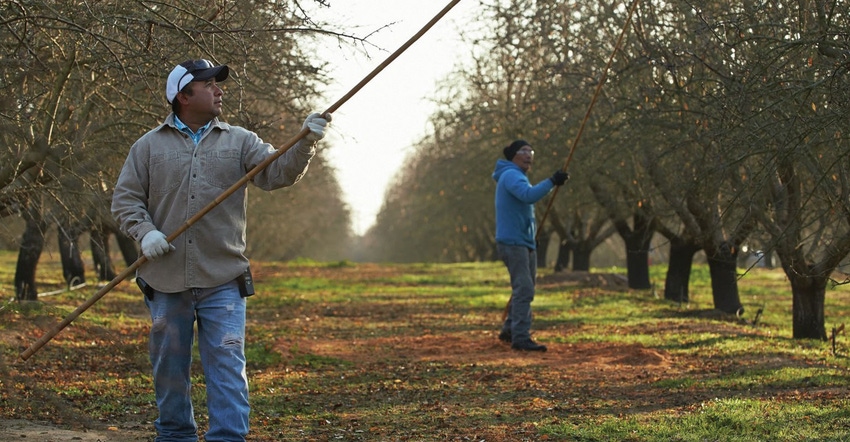
Once the major seasonal field work is done and the crop is proverbially in the barn, the tree nut focus moves to post-harvest analysis and lots of educational seminars on how to improve things the next time around.
At one held online recently, a trio of University of California specialists discussed diseases and pests found in almond and walnut orchards.
Jhalendra Rijal, northern San Joaquin Valley integrated pest management (IPM) advisor for Stanislaus, San Joaquin, and Merced Counties, spoke to the issue and control of the industry’s #1 pest – Navel orangeworm. Colleague Themis Michailides from the UC Cooperative Extension’s Kearney Agricultural Research and Extension Center, focused on control efforts of walnut mold, while Kris Tollerup, an IPM adviser at Kearney, discussed ants in almonds.
Here’s a synopsis of what the threesome had to say:
Navel orangeworm
“Navel orangeworm is the major pest of nut crops in valley orchards with larva feeding on nut meat after almond hull split or walnut husk split," said Rijal. "NOW is an opportunistic pest, highly mobile, and highly prolific with one female producing 300-400 eggs in a lifecycle. Because of their adaptability, they are difficult to predict and control.
“The components of NOW management methods start with monitoring or scouting for NOW presence or activity,” he said. “Orchard sanitation is the foundation of NOW control as half a dozen larvae can survive within a single nut -- remove and destroy mummies before springtime.
“When NOW moth flights start coming, consider early harvest if 100% of the nuts at 6- to 8-foot height are at hull split – get to the nuts before they do,” he urged.
“Behavioral insect control is accomplished through mating disruption via a release of synthetic pheromones to disorient the males,” he continued. “This is a long-term area-wide big-block population destruction strategy before spring flights begin.
“Then there are insecticides to be used in combination with other tactics. Combining methods will better reduce populations over time.”
Fungal issues
Themis Michaelides, UC Davis plant pathologist, limited his comments to fungal problems in walnuts, noting: “Walnut mold is not a new phenomenon but it has become a serious issue over the past several years.”
So much so that the California Walnut Board is supporting research to try and manage that mold.
“We know that increased humidity and more days on the ground contribute to an increase in mold, so we have four objectives in our project – to identify which fungi causes mold; to determine when and how mold develops; to learn what factors affect mold and BAN (brown apical necrosis lesions particularly in Howard and Ivanhoe cultivars), and the development of mold management methods,” he said.
Ants
Ants in almond orchards were especially prevalent in 2020, and, says Kris Tollerup, UCCE IPM Advisor at Kearney Ag Center: “Higher humidity results in more days of nuts drying on the ground and attracting more pests and in the future we’ll probably run up against this same kind of problem.”
It doesn’t take long. “If nuts are on the ground for 10 days with 15 ant nests per 5,000 square feet, you’re looking at 2.1% damage to crops and it gets worse the longer they stay on the ground,” Tollerup said. “Ant control is critical.”
There are 300 species of ants in California with two key players – the pavement ant and the southern fire ant, both identified by two node bodies. “Granular baits are about the only treatment weapon for ants in almonds,” Tollerup said. “Some baits are fast-acting to kill workers --- although the queen is the ultimate target to control that nest.”
For more news on tree nuts as reported by growers and farm advisors, subscribe to the Tree Nut Farm Press e-newsletter.
About the Author(s)
You May Also Like




